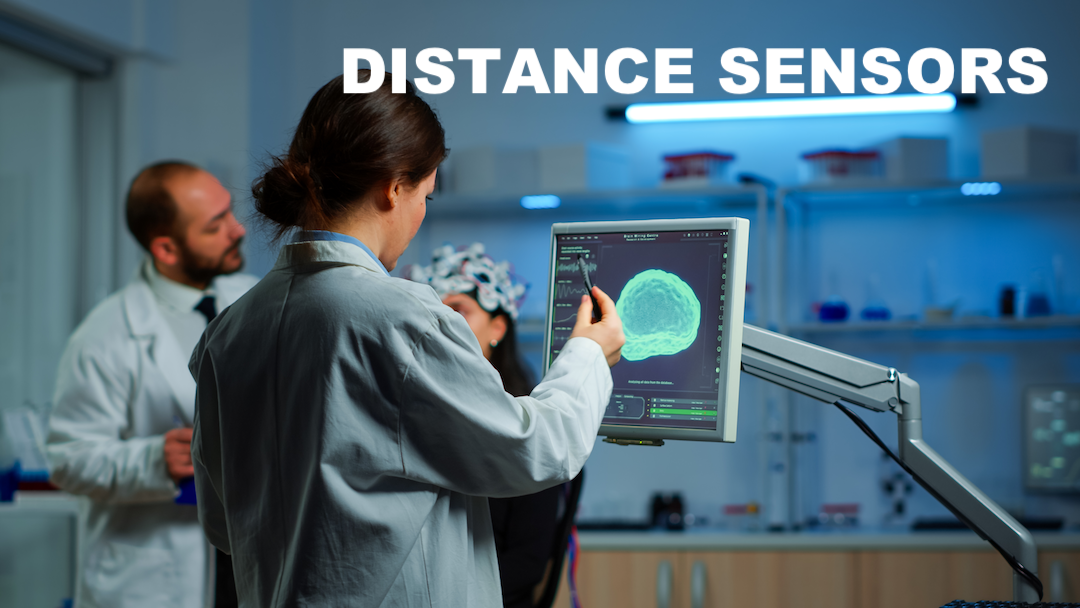
Distance sensors are devices that can detect the presence of objects and measure the distance between them. They are used in a wide range of applications, from robotics and automation to automotive and aerospace industries. Here’s a look at the different types of distance measuring sensors available, such as ultrasonic, infrared, and laser sensors. This article will also explain how each type of sensor works and what applications they are best suited for.
Ultrasonic Sensors
Ultrasonic sensors use sound waves to detect the presence of objects and measure the distance between them. They emit high-frequency sound waves that bounce off objects and return to the sensor. The time it takes for the sound waves to return is used to calculate the distance between the sensor and the object.
Ultrasonic sensors are commonly used in robotics, automation, and automotive industries. They can be used for obstacle avoidance, object detection, and level measurement. For example, in self-driving cars, ultrasonic sensors are used to detect other vehicles, pedestrians, and obstacles on the road. They can also be used in manufacturing plants to detect the presence of objects on a conveyor belt.
In addition to self-driving cars and drones, distance sensors are also used in robots that work in hazardous environments such as nuclear power plants or oil rigs. These robots use distance sensors to detect obstacles and avoid collisions while performing tasks such as inspection, maintenance, or repair.
Infrared Sensors
Infrared sensors use infrared light to detect the presence of objects and measure the distance between them. They emit infrared light that bounces off objects and returns to the sensor. The time it takes for the light to return is used to calculate the distance between the sensor and the object.
Infrared sensors are commonly used in security systems, automation, and automotive industries. They can be used for object detection, obstacle avoidance, and level measurement. For example, in security systems, infrared sensors are used to detect intruders and trigger an alarm. They can also be used in automotive industries for parking assistance systems.
In addition to manufacturing plants and security systems, distance sensors are also used in medical equipment such as ultrasound machines and CT scanners. These machines use distance sensors to detect the position of organs or tissues inside the body and create images that help doctors diagnose diseases or injuries.
Laser Sensors
Laser sensors use laser light to detect the presence of objects and measure the distance between them. They emit laser light that bounces off objects and returns to the sensor. The time it takes for the light to return is used to calculate the distance between the sensor and the object.
Laser sensors are commonly used in robotics, aerospace, and automotive industries. They can be used for navigation, mapping, localization, obstacle avoidance, object detection, level measurement, and many other applications. For example, in aerospace applications such as aircraft landing systems and satellite navigation systems, laser sensors are used to provide accurate measurements of distances between objects.
In addition to warehouse automation or space exploration missions such as Mars rovers or docking maneuvers between spacecraft or satellites.
Time-of-Flight Sensors
Time-of-flight (TOF) sensors use light waves to detect the presence of objects and measure the distance between them. They emit light waves that bounce off objects and return to the sensor. The time it takes for the light waves to return is used to calculate the distance between the sensor and the object.
TOF sensors are commonly used in robotics, automation, automotive industries, and many other applications. They can be used for navigation, mapping, localization, obstacle avoidance, object detection, level measurement, and many other applications. For example, in robotics applications such as warehouse automation or space exploration missions such as Mars rovers or docking maneuvers between spacecraft or satellites.
Capacitive Sensors
Capacitive sensors use the principle of capacitance to detect the presence of objects and measure the distance between them. They consist of two conductive plates separated by a dielectric material. When an object comes close to the sensor, it changes the capacitance between the plates, which is detected by the sensor.
Capacitive sensors are commonly used in touchscreens, proximity sensors, and level measurement applications. For example, in smartphones and tablets, capacitive sensors are used to detect the position of fingers on the screen and provide touch feedback. They can also be used in liquid level measurement applications to detect the level of liquid in a container.
Conclusion
Distance measuring sensors are versatile devices that have a wide range of applications across various industries. Ultrasonic sensors use sound waves, while infrared sensors use infrared light to detect objects. Laser sensors use laser light, while TOF sensors use light waves to detect objects. By using distance sensors, companies can improve safety, increase efficiency, reduce costs and enhance their products and services.
Share this post
Leave a comment
All comments are moderated. Spammy and bot submitted comments are deleted. Please submit the comments that are helpful to others, and we'll approve your comments. A comment that includes outbound link will only be approved if the content is relevant to the topic, and has some value to our readers.

Comments (0)
No comment